VERY RARE! WWII October 25th, 1945 Iwo Jima Inquirer Battlefield-Printed USMC Combat Press Newspaper
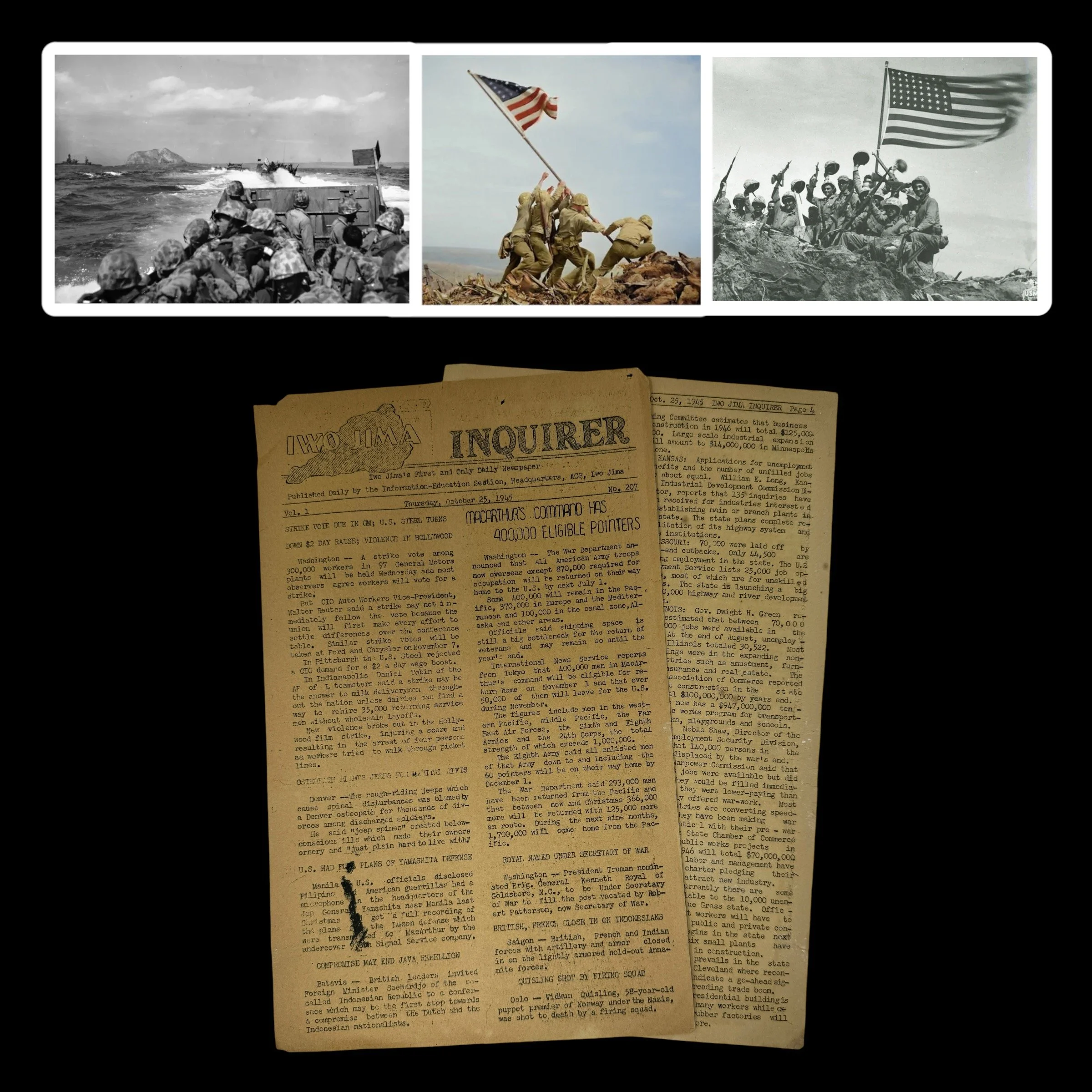
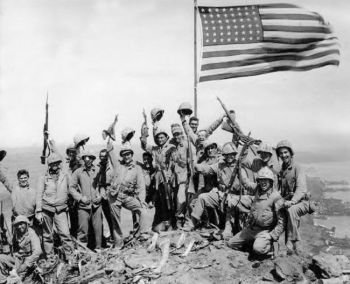
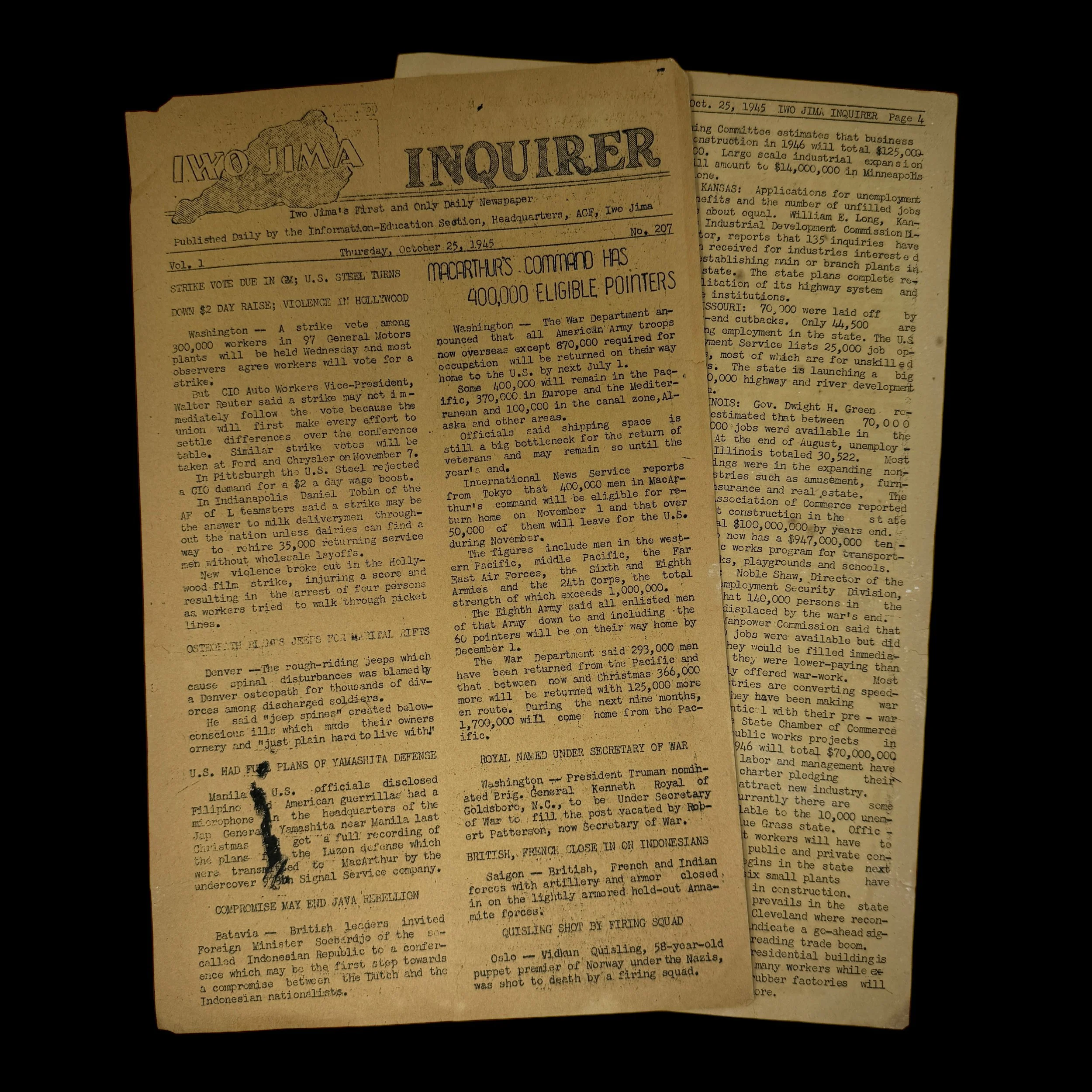
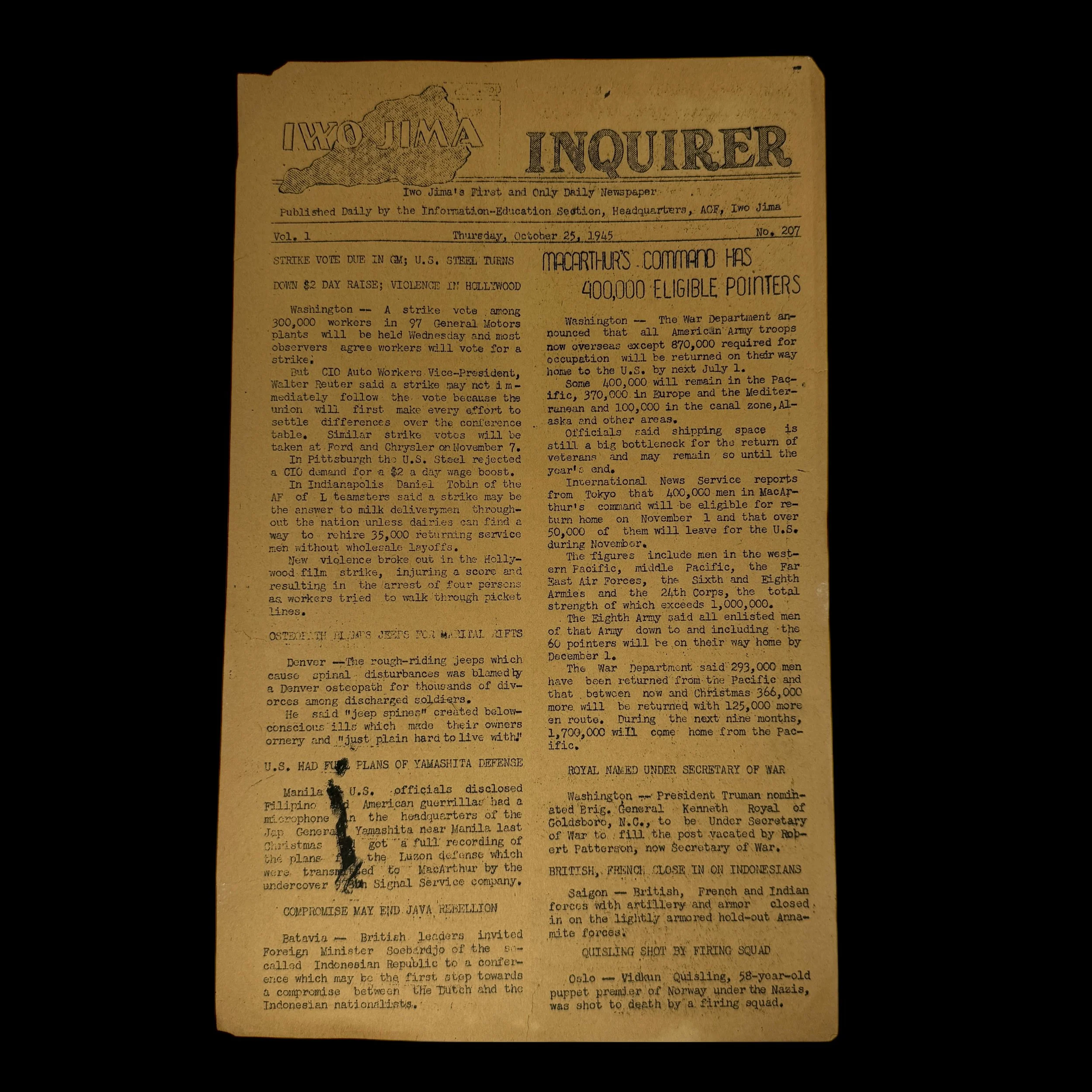
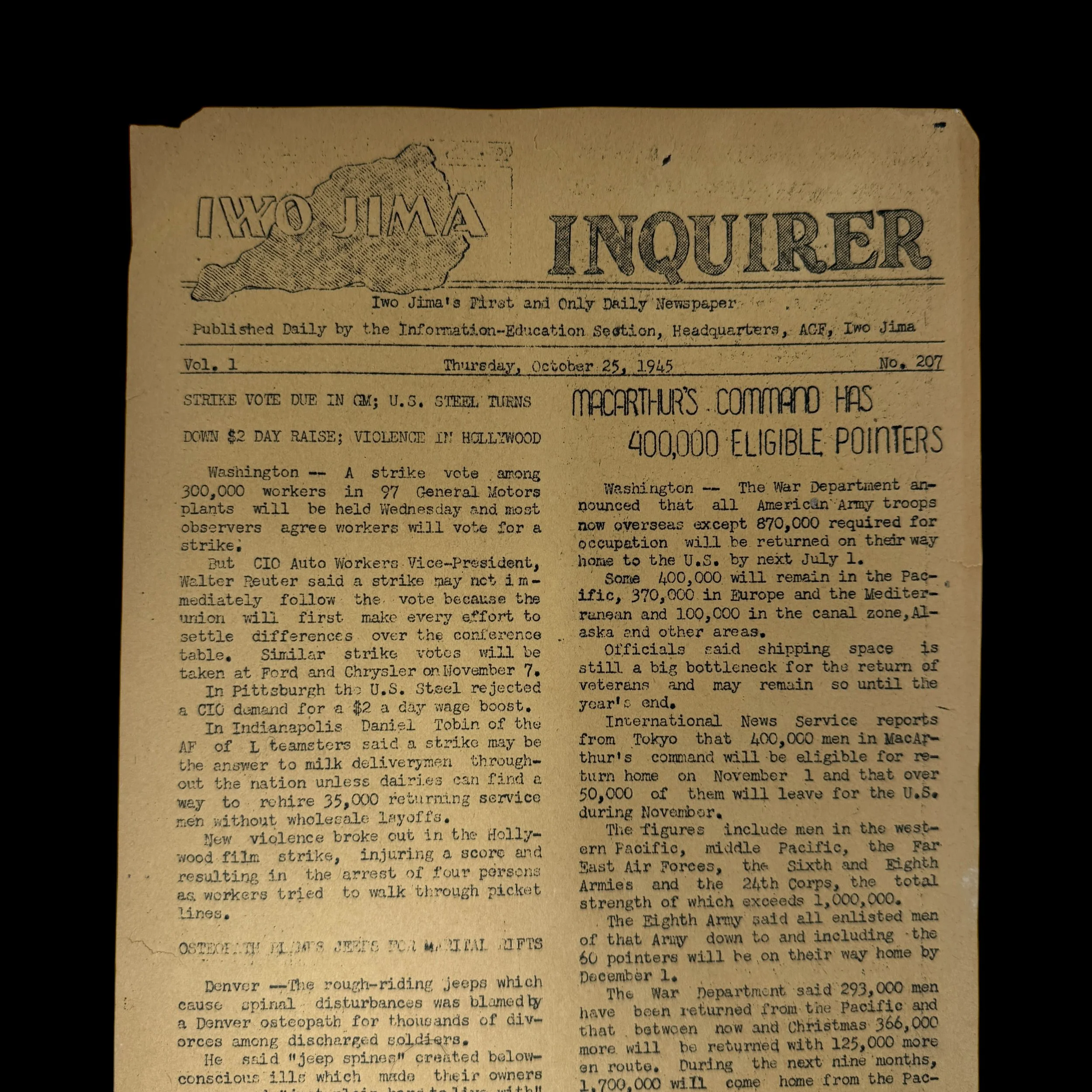
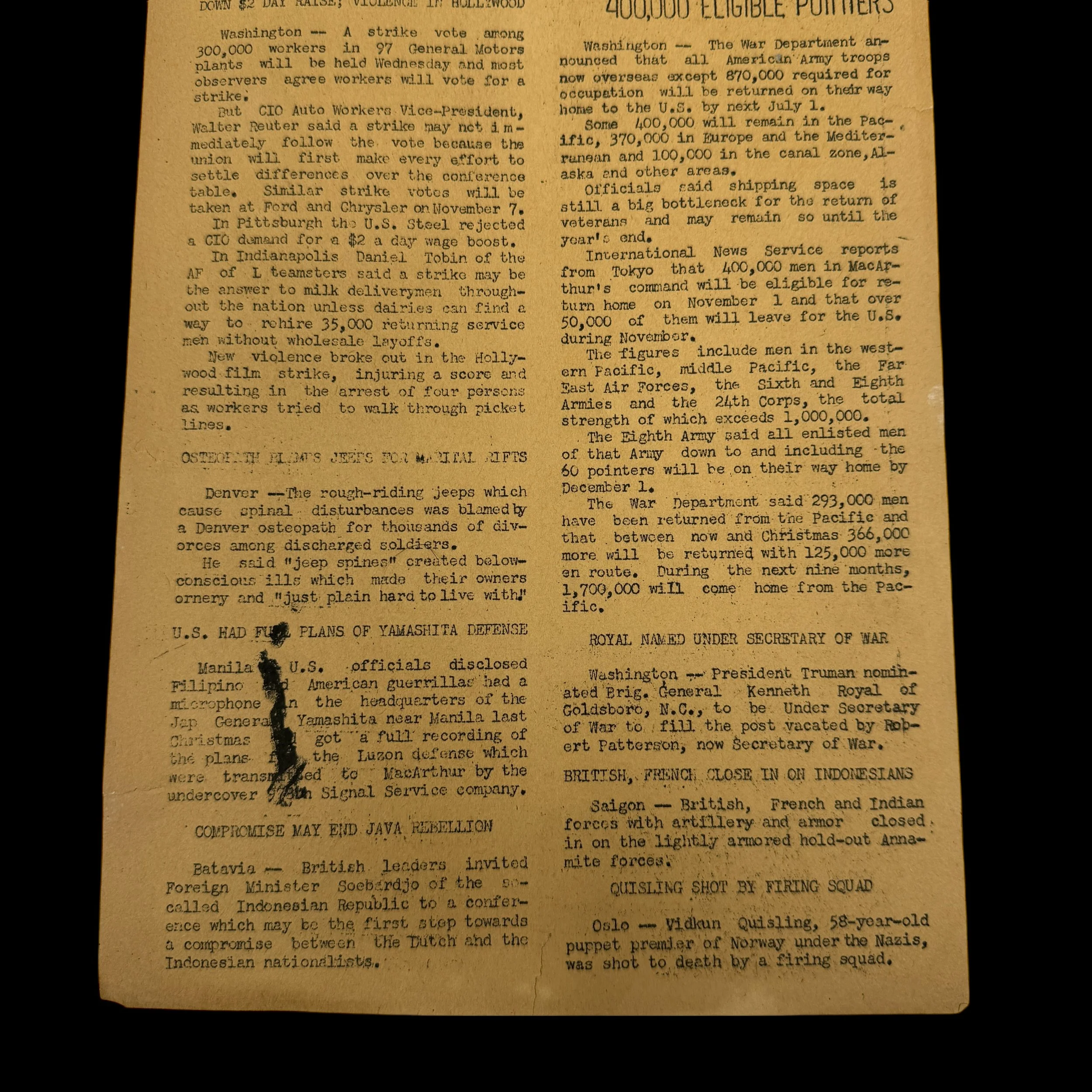
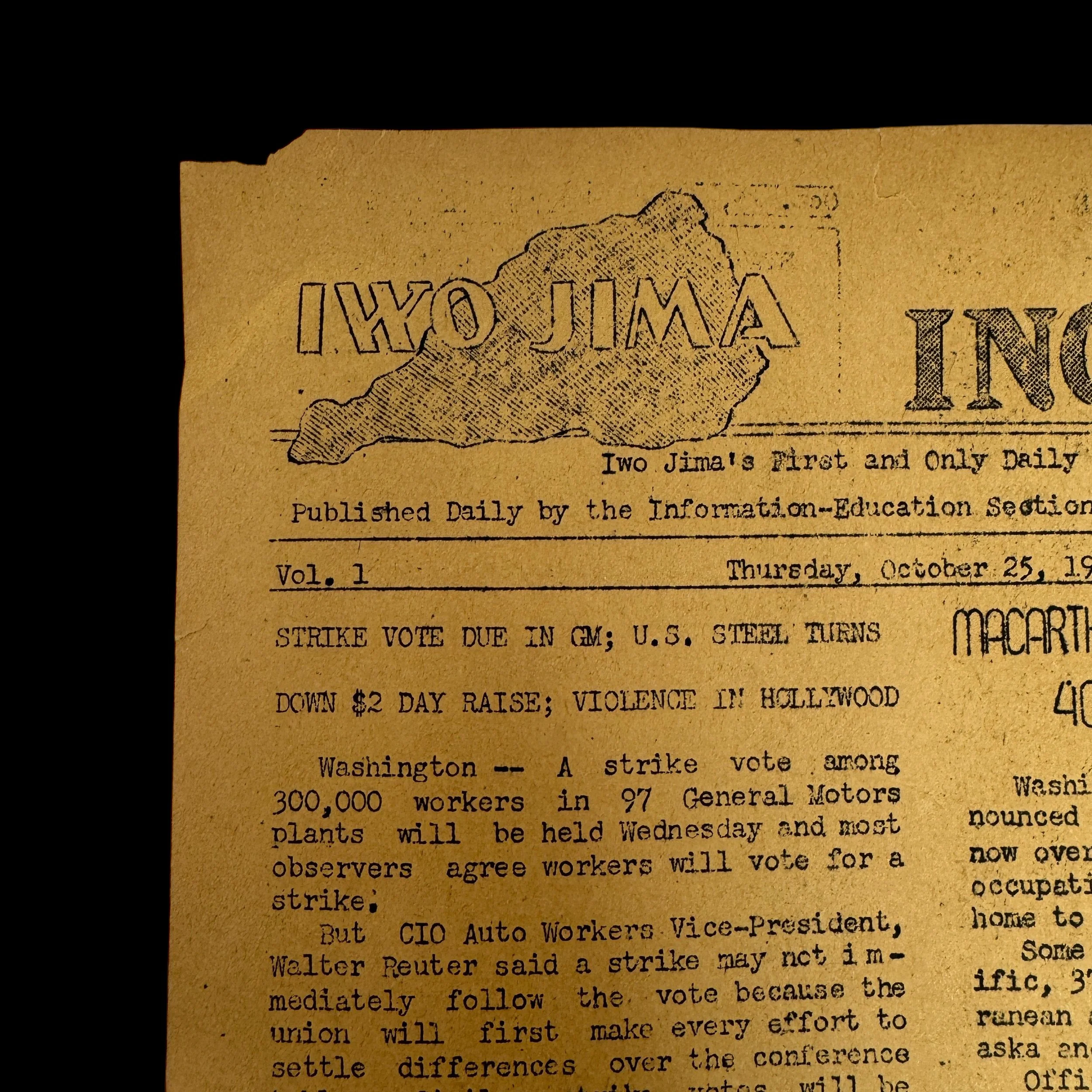

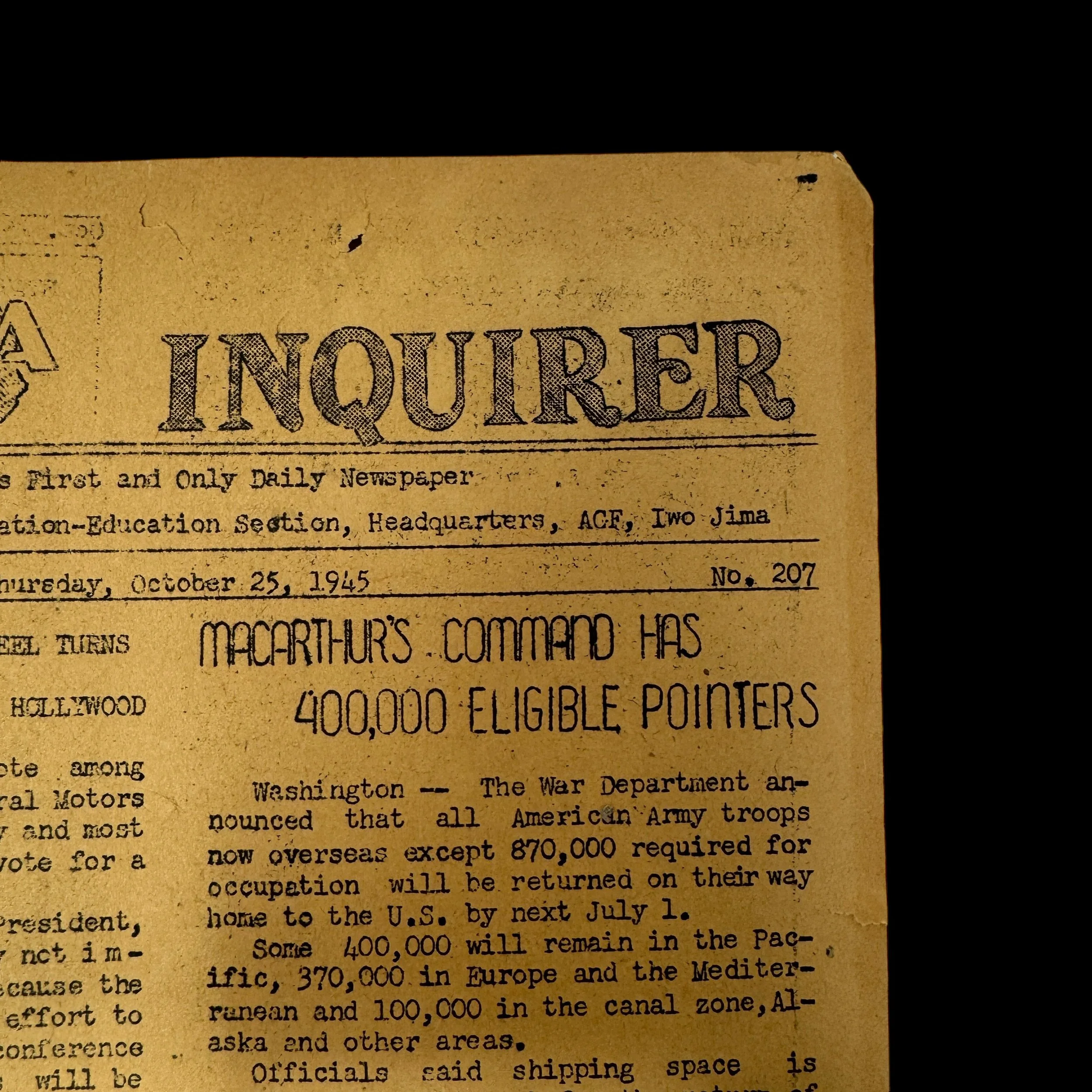
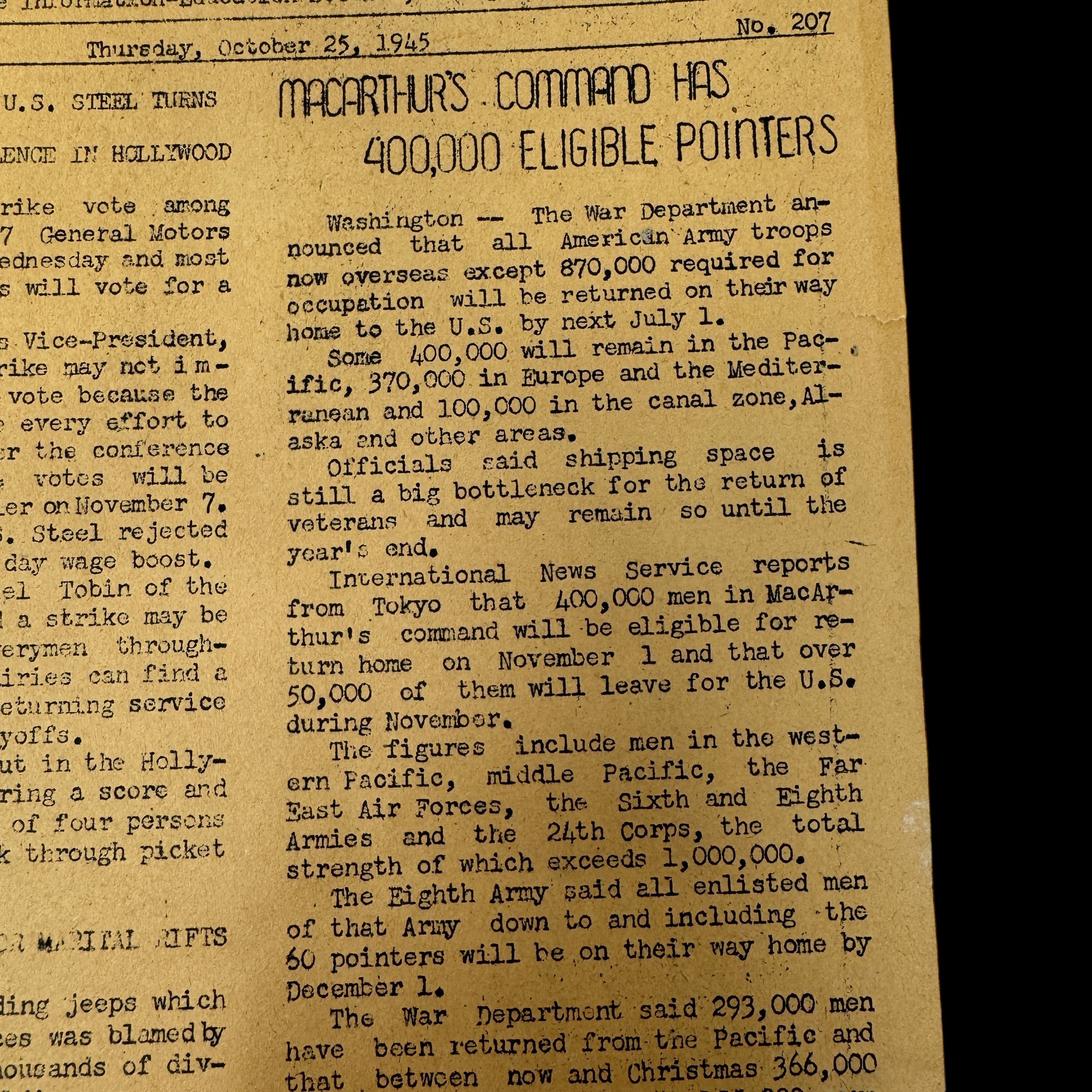
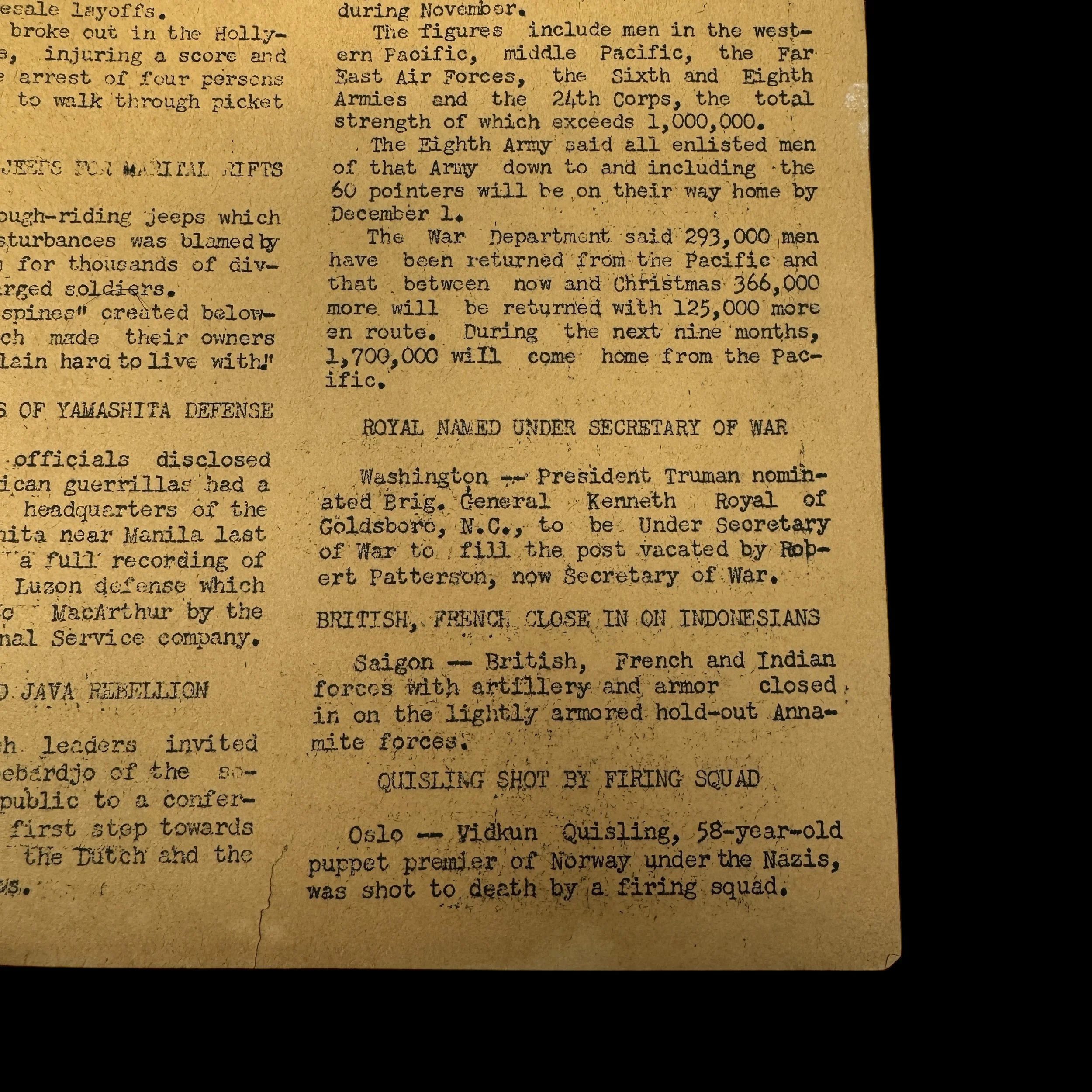
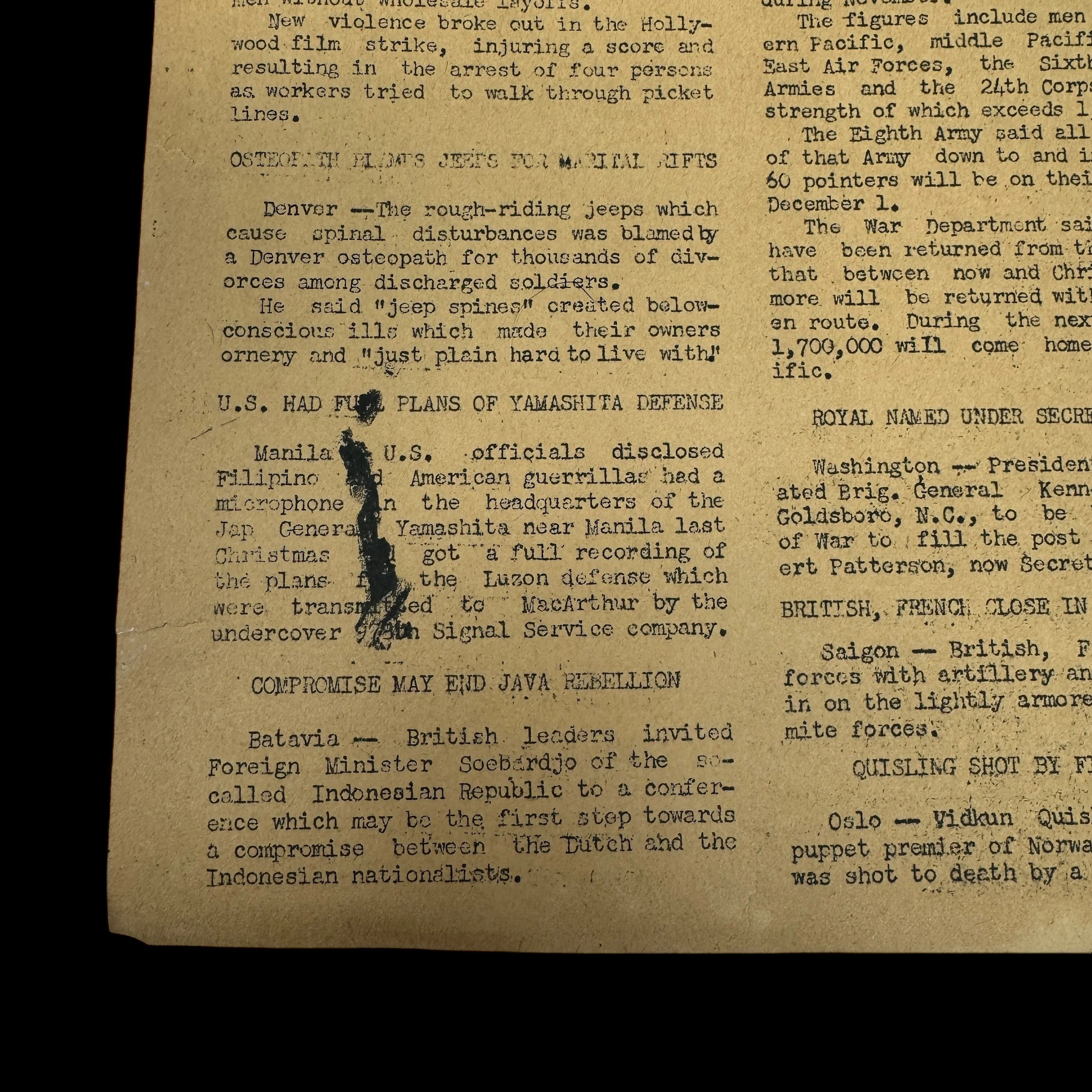
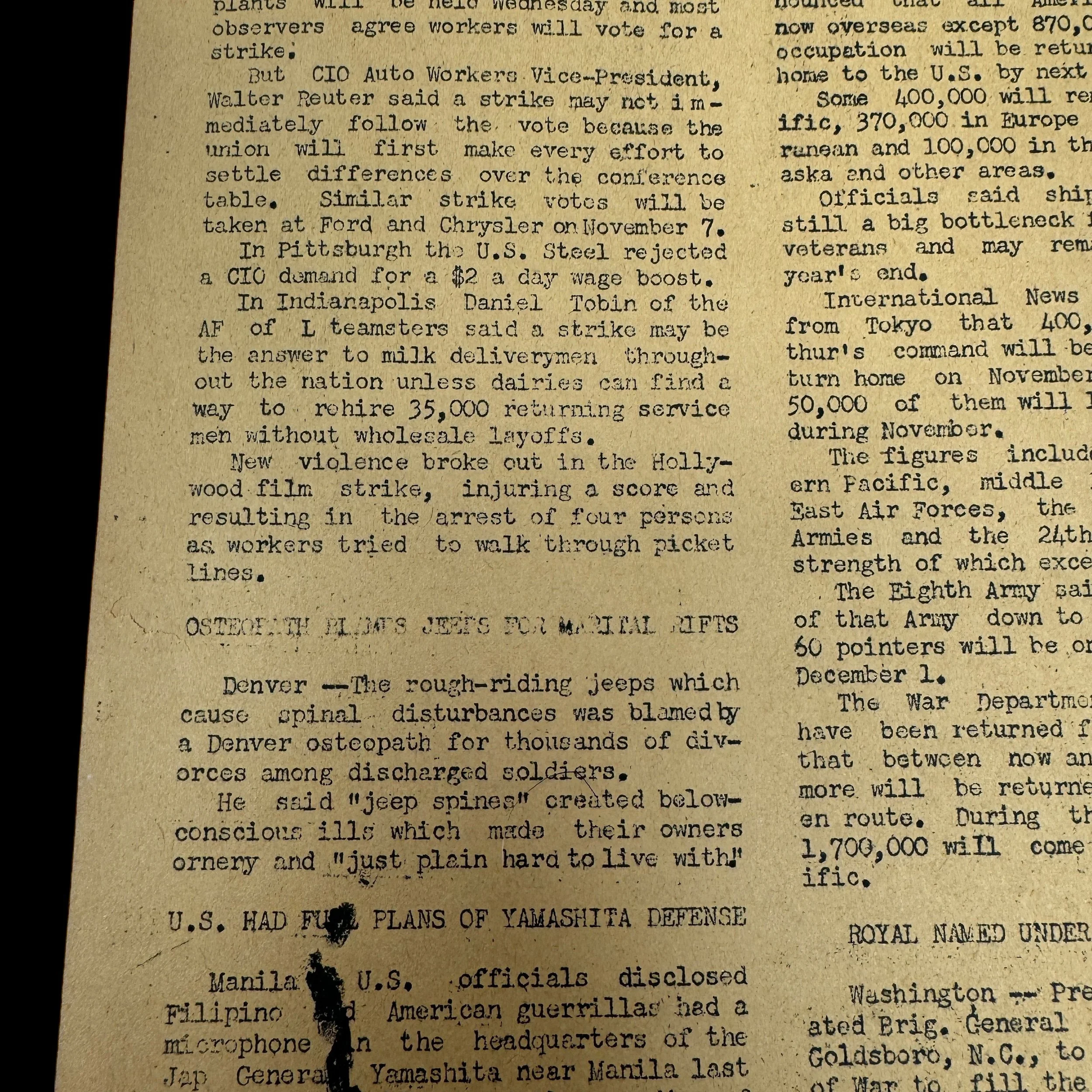
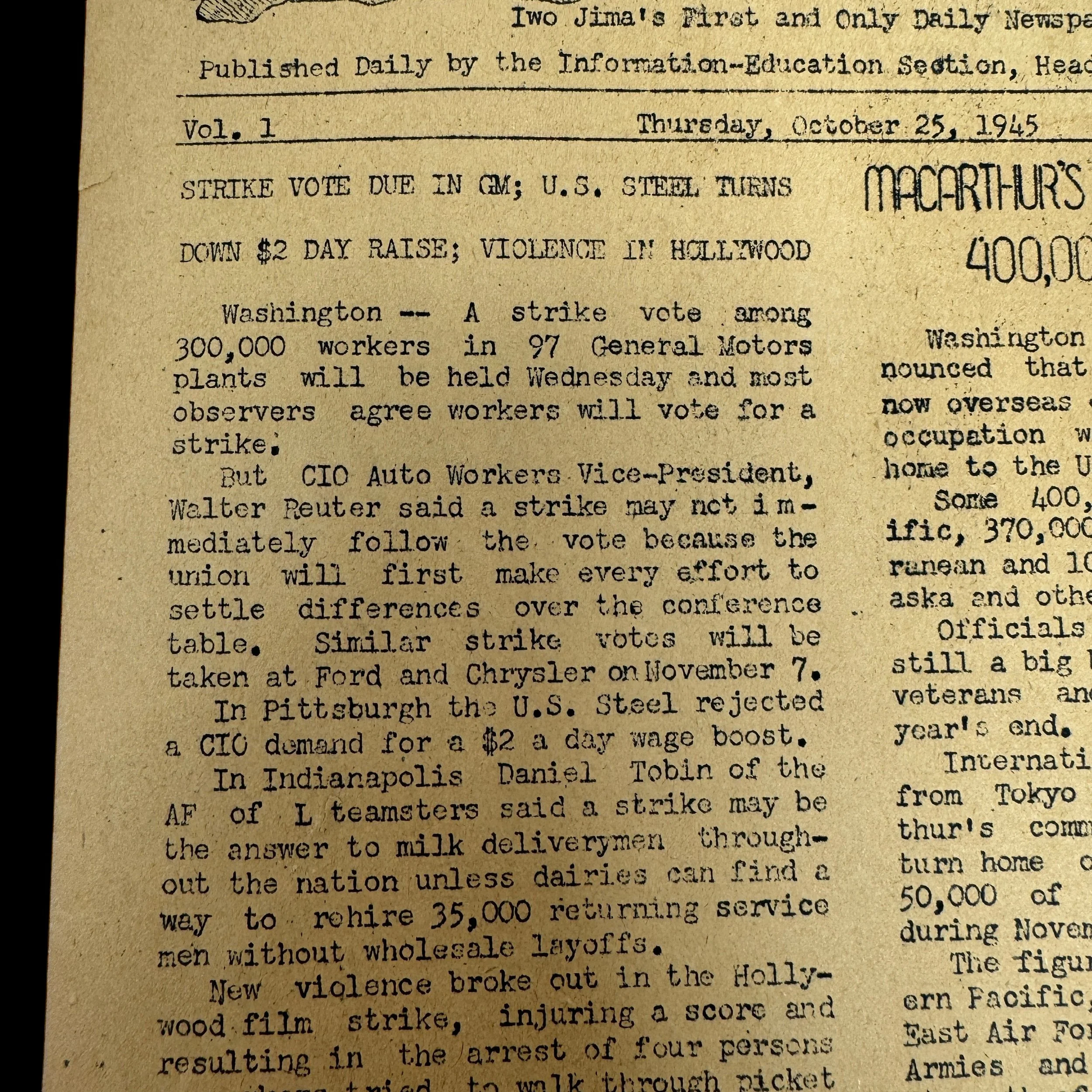
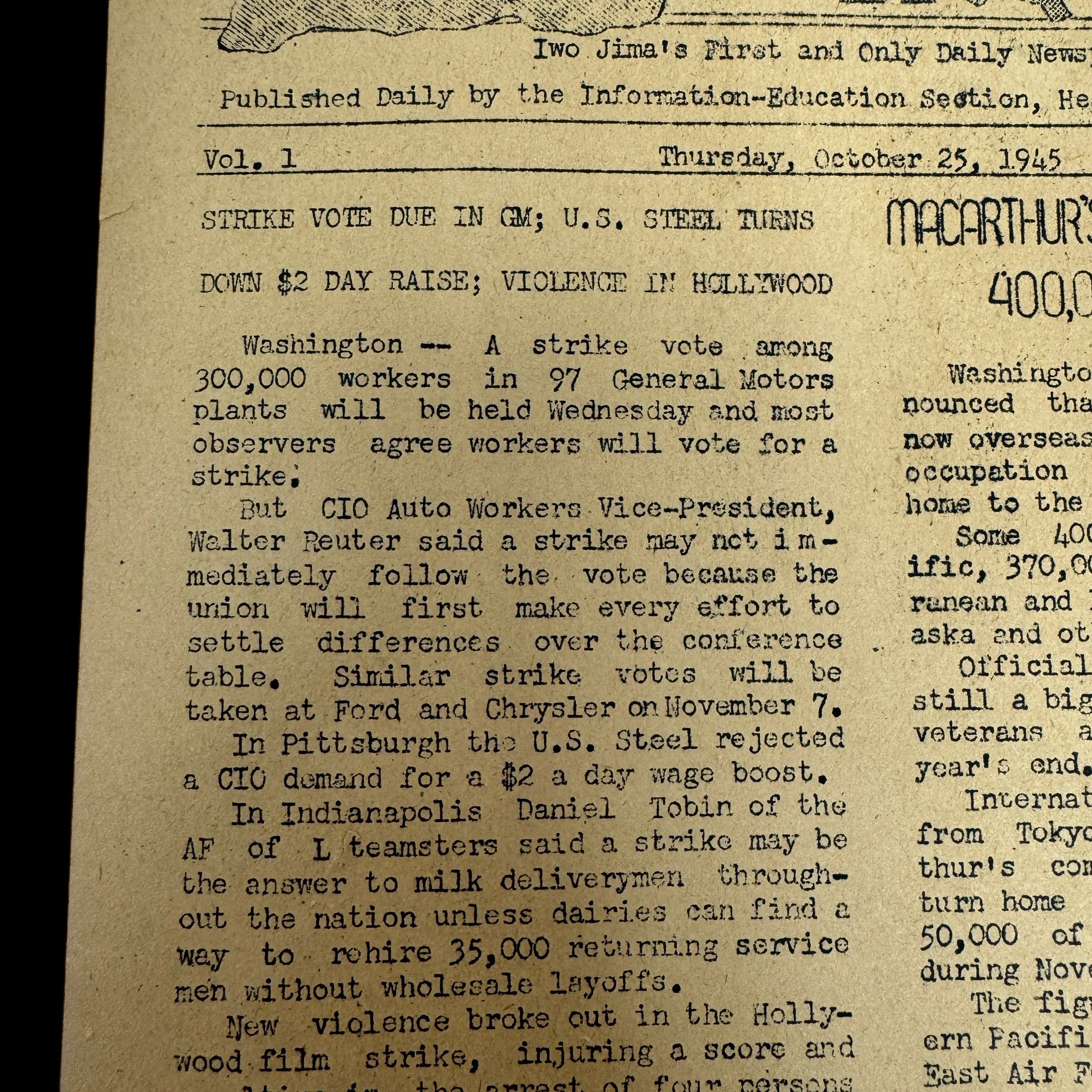
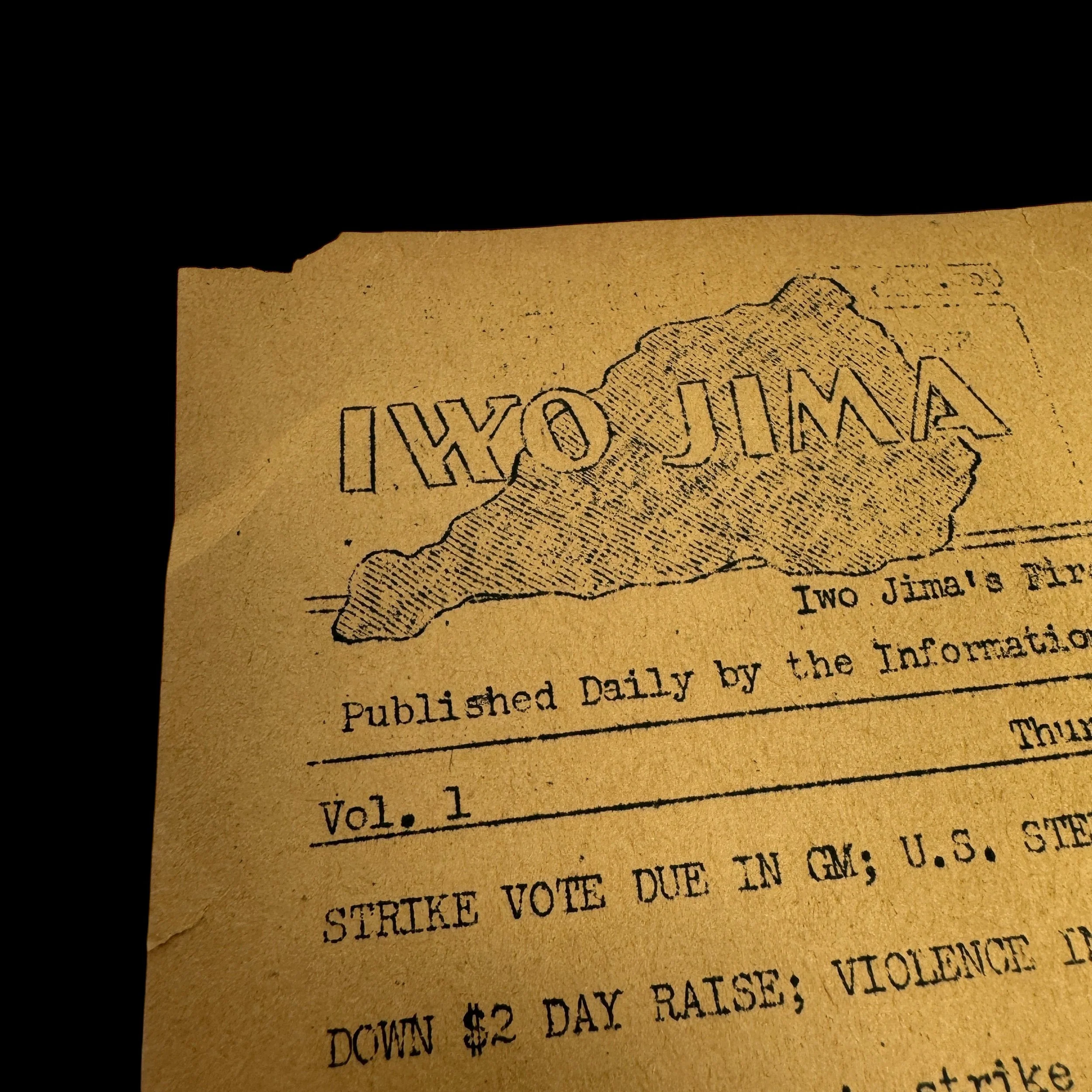
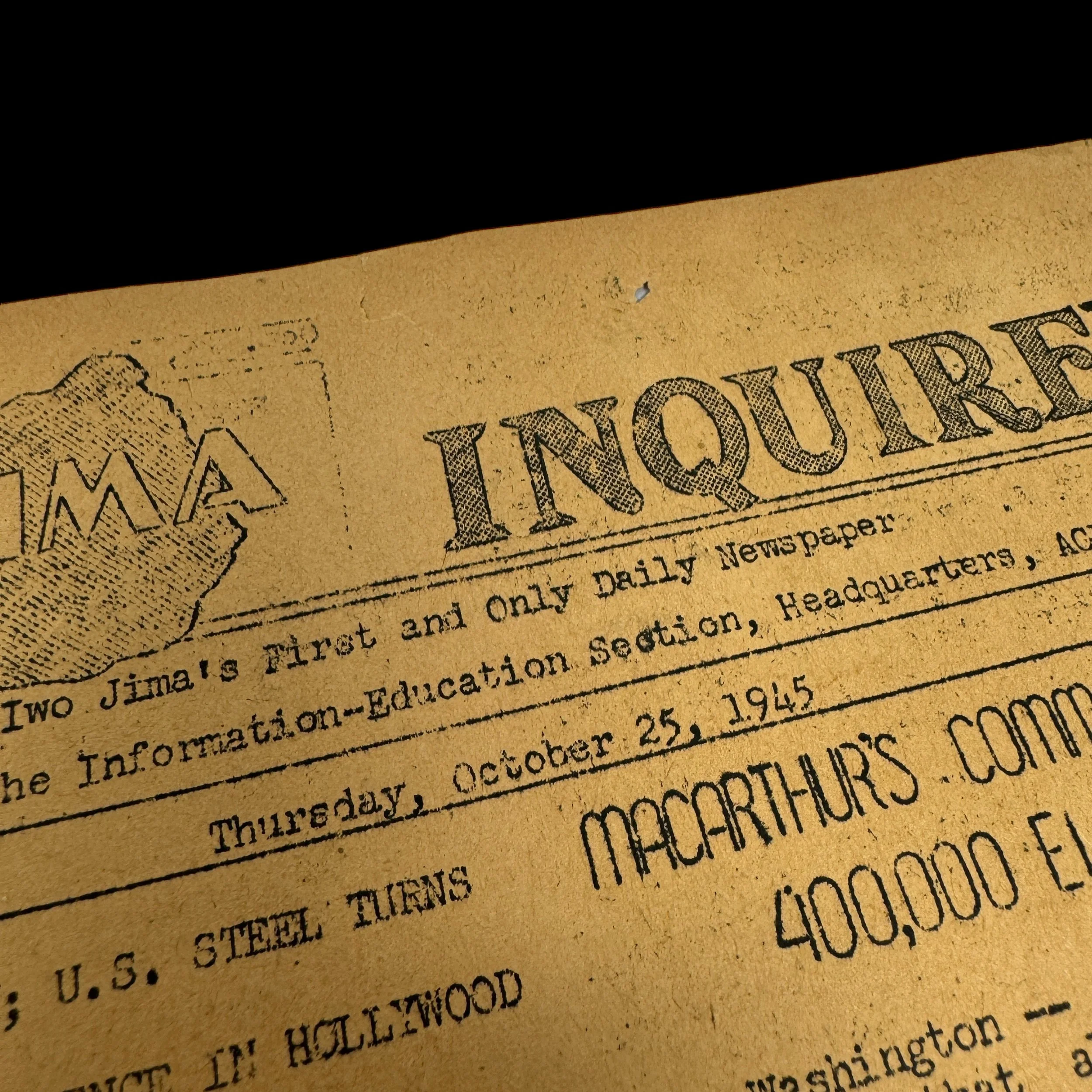

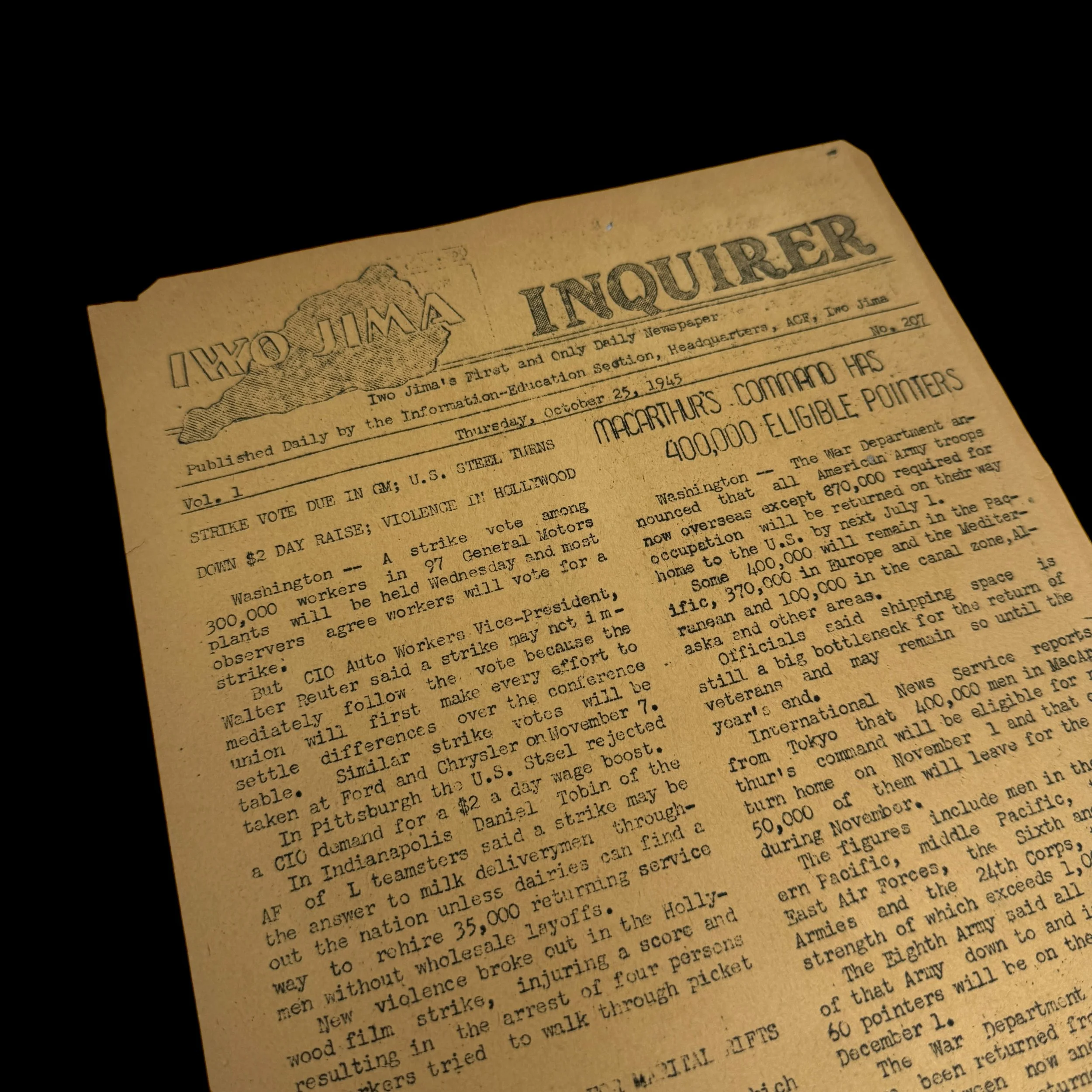

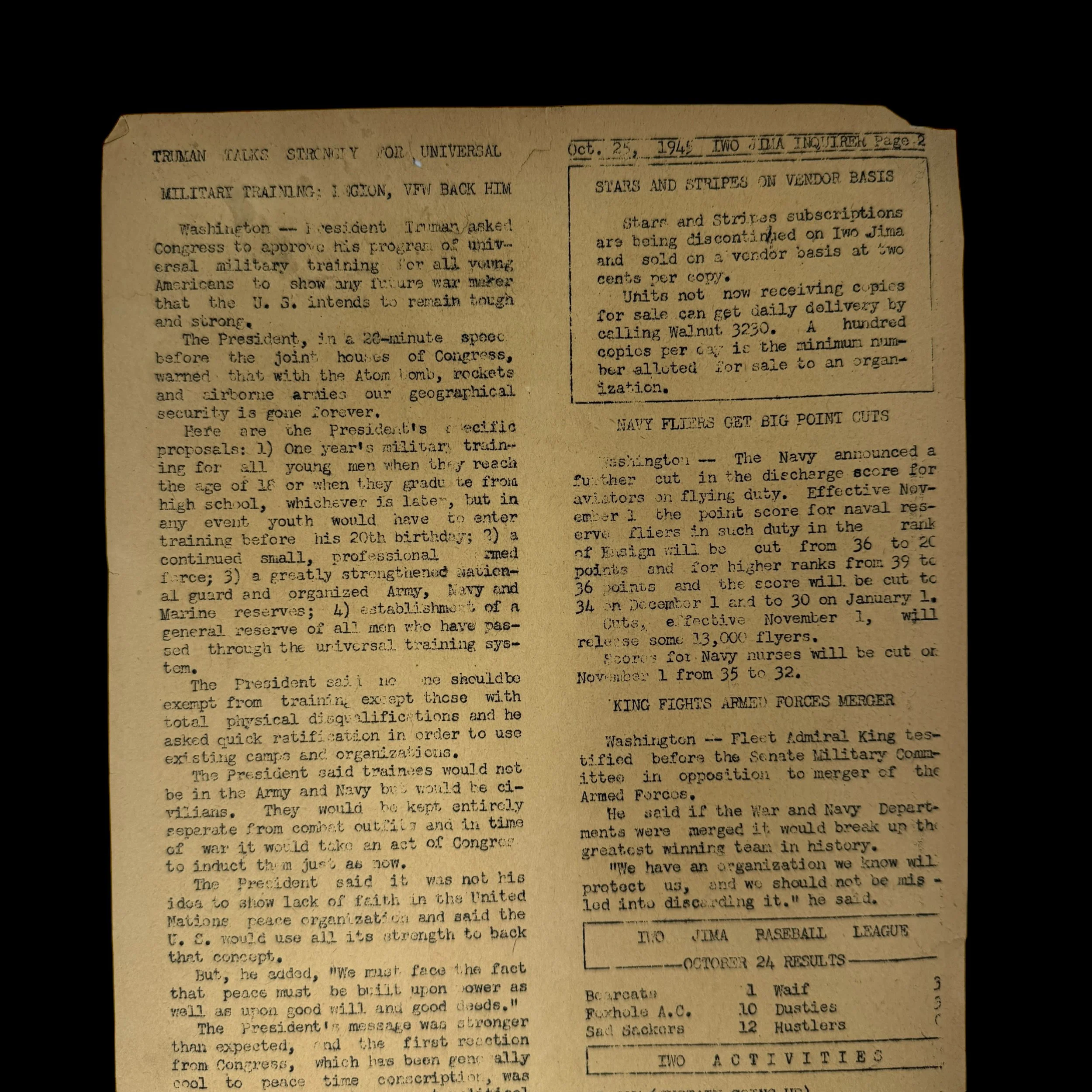
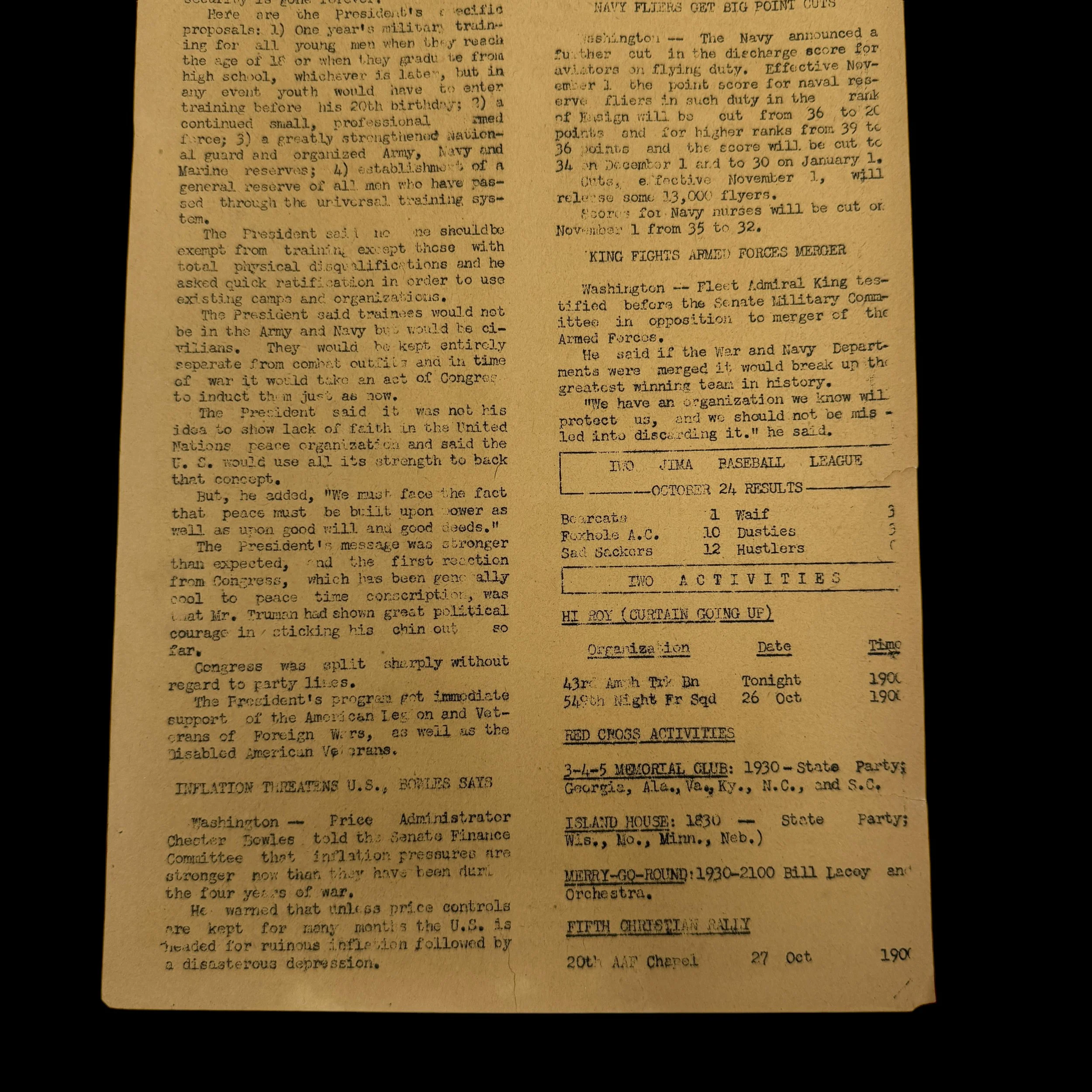

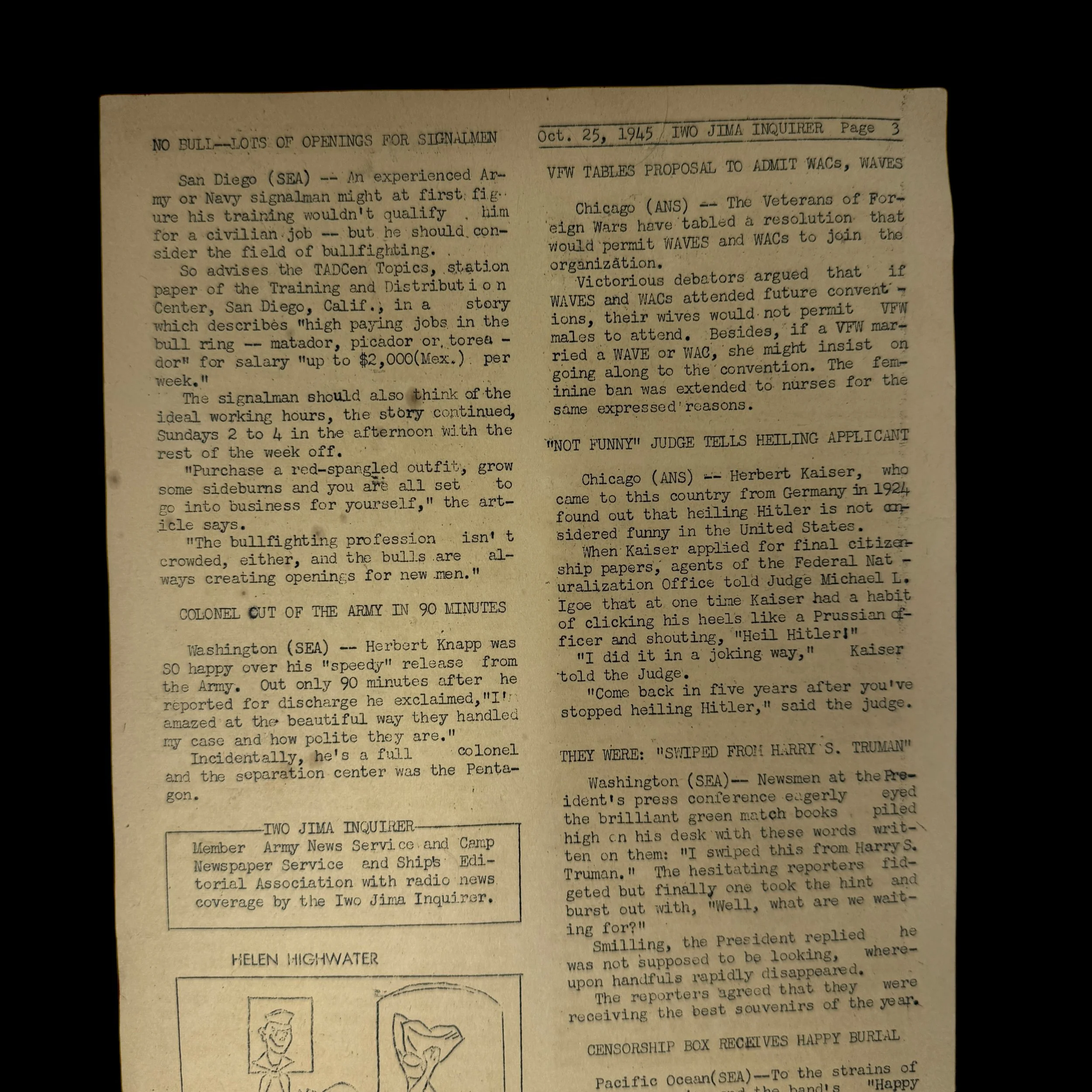
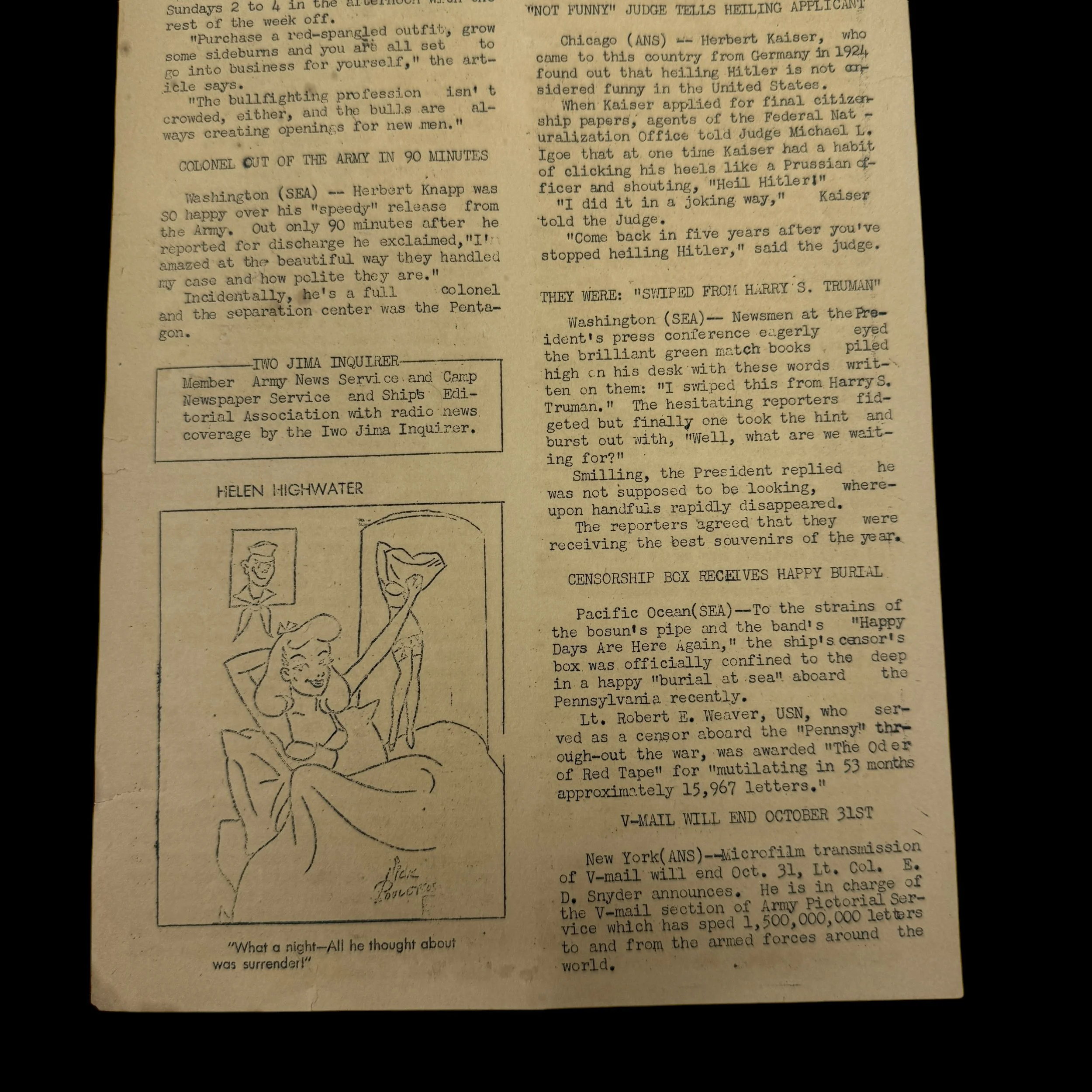
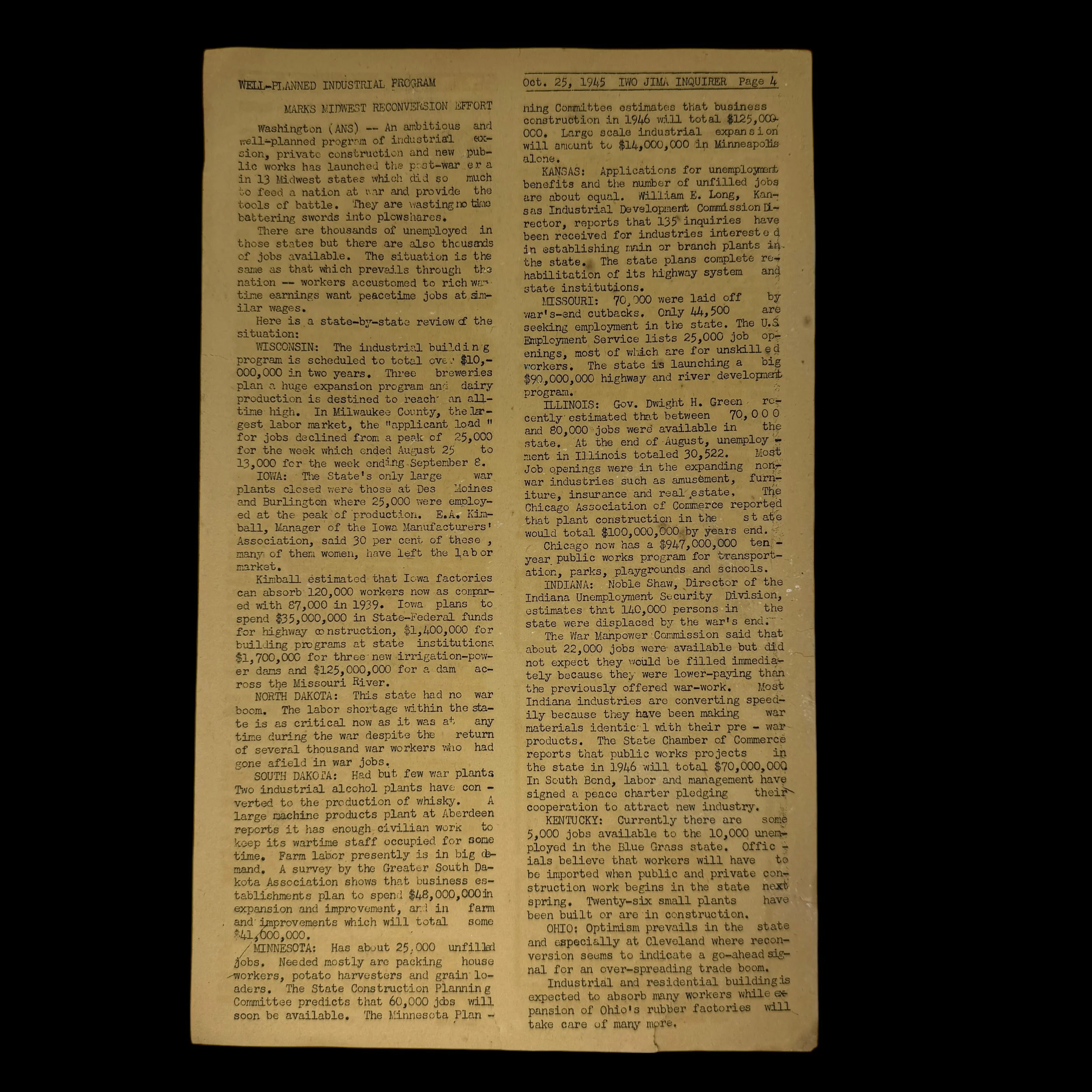
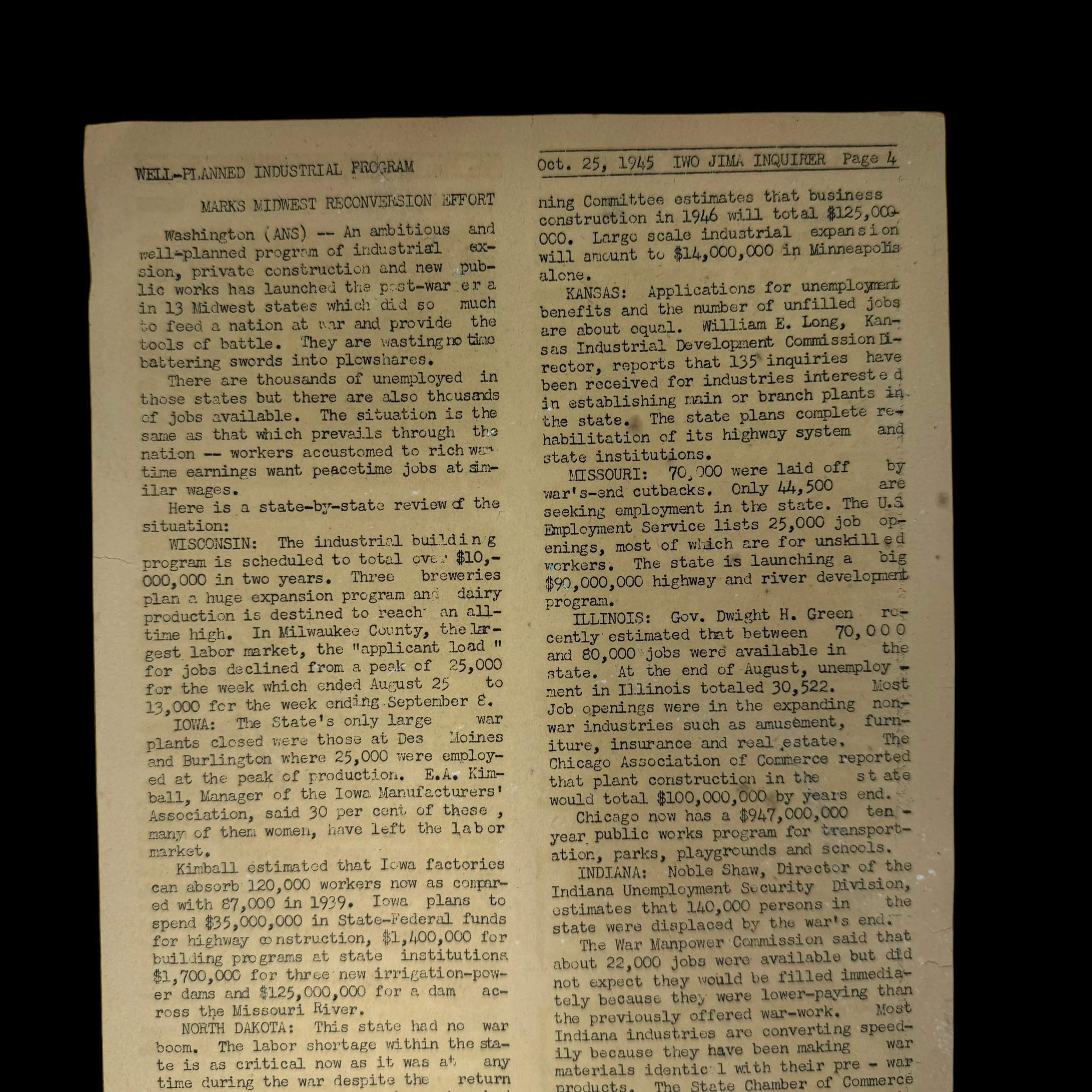
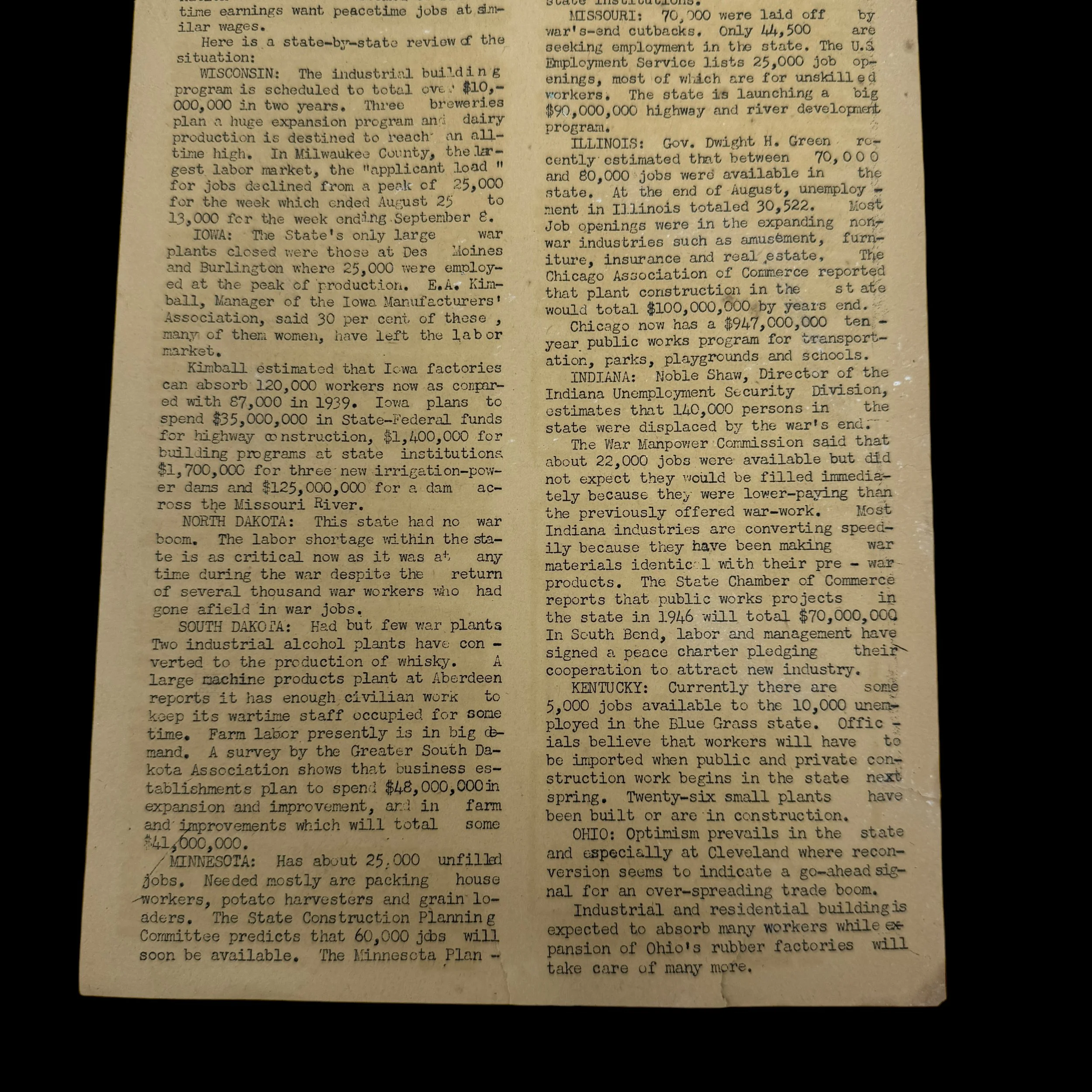
VERY RARE! WWII October 25th, 1945 Iwo Jima Inquirer Battlefield-Printed USMC Combat Press Newspaper
Comes with a hand-signed C.O.A.
*Proudly deemed "IWO JIMA'S FIRST & ONLY DAILY NEWSPAPER" the 1945 Iwo Jima Inquirer is considered a highly sought-after relic of both journalistic and military history. Due to the harsh conditions under which this battlefield newspaper was printed on Iwo Jima, few copies survived the war. Those that remain are held by high-end museums archives.
Size: 8 x 13 inches
This exceptionally rare, museum-grade WWII artifact is an original 1945 "Iwo Jima Inquirer" battlefield-printed newspaper. Dated October 25th, 1945, this unique publication is a remarkable testament to the grit and resilience of the Marines and military journalists stationed on Iwo Jima. It stands as a symbol of the determination to maintain communication and morale amidst one of the most brutal and pivotal battles of the Pacific Theater.
Publishing a newspaper in a battle zone was a near-impossible task. Equipment was scarce, paper supplies were limited, and the constant threat of enemy fire meant that the editorial team often had to move their operations to avoid danger. Yet, despite these overwhelming challenges, the dedicated Marines, military journalists, and press corps on the island succeeded in producing the Iwo Jima Inquirer. This battlefield-printed newspaper was created, written, and distributed entirely on the island, making it an unprecedented and singular piece of military press history.
While modest in appearance, the importance of the Iwo Jima Inquirer far exceeded its physical form. Produced on rudimentary printing presses, often under perilous conditions, the newspaper delivered vital news and updates to the soldiers stationed on the island. More than just a source of information, it became a lifeline, connecting the troops to the broader war effort and, crucially, to the world they had left behind. In an environment of chaos and uncertainty, the paper provided a sense of normalcy, giving the soldiers a brief respite from the horrors of battle.
The Battle of Iwo Jima, which lasted from February 19 to March 26, 1945, was one of the fiercest confrontations between U.S. forces and Imperial Japan. The U.S. Marines faced brutal resistance as they fought to secure the small, strategic island, which was critical for providing a base for air support and future operations against Japan. The intense combat resulted in approximately 26,000 American casualties, including nearly 7,000 deaths. After the battle, Iwo Jima became a key military outpost, with its airfields used by Allied forces for bombing raids on the Japanese mainland until the end of the war.
Despite the cessation of active combat on the island, life on Iwo Jima after the battle was far from peaceful. The island remained a critical airbase, where U.S. forces continued operations until Japan’s surrender in September 1945. Soldiers stationed on Iwo Jima faced isolation, the ongoing threat of booby traps left by Japanese forces, and the psychological toll of having fought in one of the war’s bloodiest battles. Amid this atmosphere of uncertainty, the Iwo Jima Inquirer served as a vital outlet, providing news, updates, and, most importantly, a connection to the outside world.
The Iwo Jima Inquirer, though small and short-lived, was a symbol of resilience and hope for the soldiers who read it. The fact that it was printed at all, amidst the rubble of war, is a testament to the unyielding human spirit. The paper embodied the belief that even in the direst of circumstances, information and communication were essential for survival. It also underscored the military’s commitment to maintaining morale, even on the most remote and war-torn battlefields.
Today, the Iwo Jima Inquirer is considered a highly sought-after relic of both journalistic and military history. Due to the harsh conditions under which it was printed, few copies survived the war. Those that remain are held by museums, collectors, and archives as precious artifacts, offering a rare glimpse into the lives of the soldiers who fought on Iwo Jima. These newspapers are not only valuable for their historical context but also for the poignant story they tell—of soldiers seeking connection, comfort, and hope during one of the most harrowing experiences of World War II.
This original 1945 Iwo Jima Inquirer is a piece of history that continues to resonate, symbolizing the indomitable will of those who fought and served during the war. It stands as a rare, tangible link to the battlefield, a testament to the importance of communication, and a tribute to the extraordinary efforts of those who kept the spirit of humanity alive in the most difficult of times.